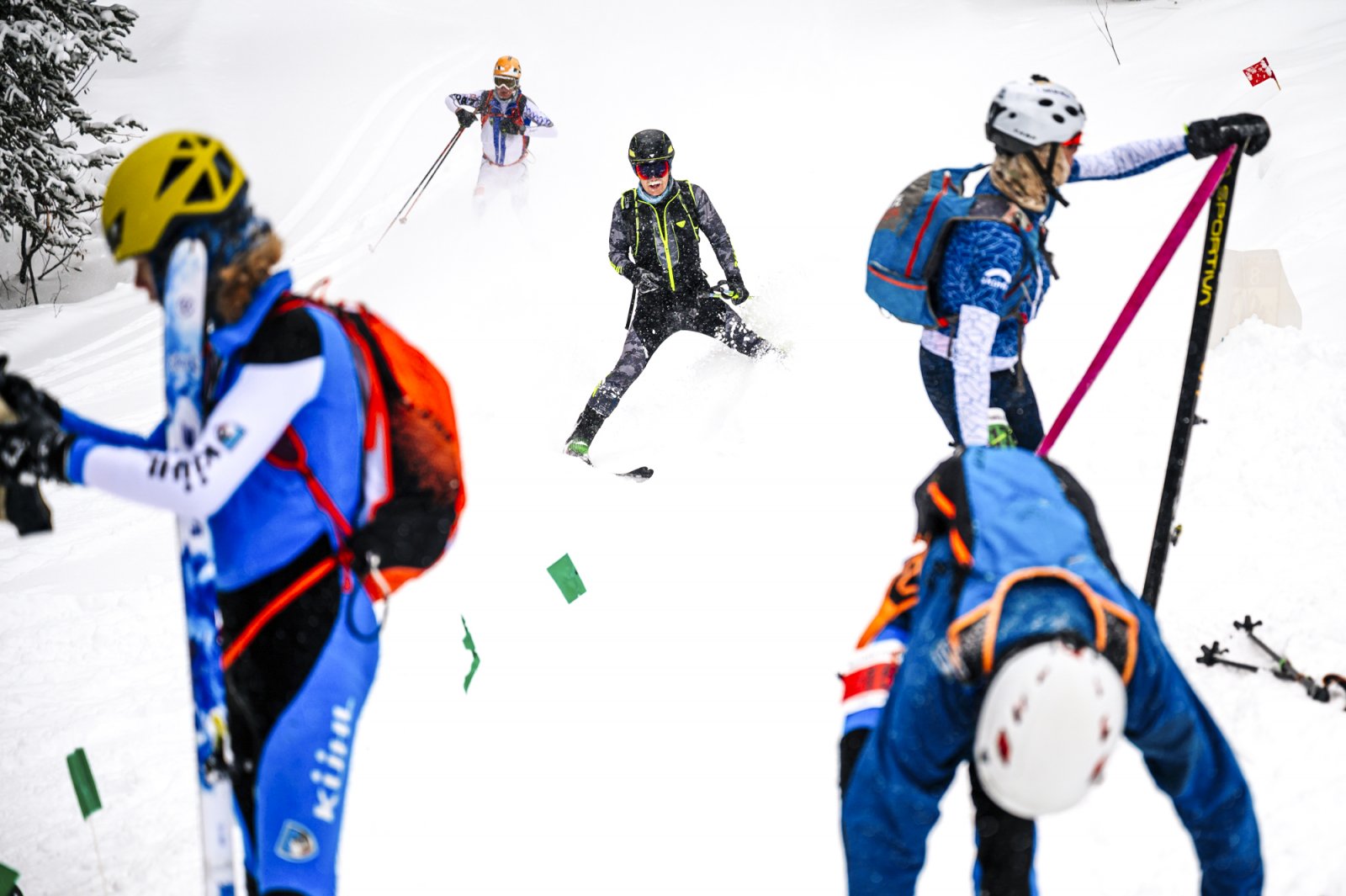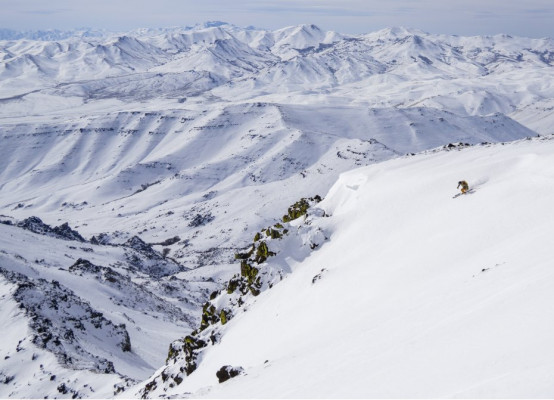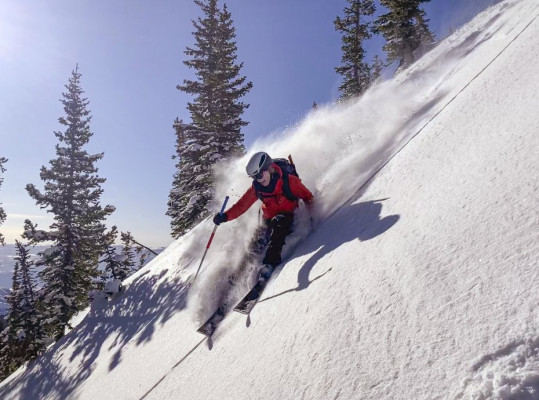1/26/2022 What's the Deal with Skimo Race Suits?
The classic, quintessential skimo race suit. Nothing says “I go fast” quite like wearing a spandex onesie in frigid winter conditions. And while many (okay, most) skiers don’t see the appeal, we’re here to tell you that for their intended purposes, race suits are unbeatable. There’s a reason that all the top finishers at races are wearing skin suits snugger than a second epidermis.
Let’s start with the “why though?” and for those of you that are still curious, we’ll go over how to shop for one.

Aren’t those things freezing?
Not when you’re moving! Skimo race suits are designed to be worn while skinning, booting, and skiing as fast as you can. It is a race after all. So instead of feeling like a soggy trash bag, race suits are designed to breathe and prevent overheating. They’re also primarily made out of spandex and mesh to be comfortable, stretchy, and promote unrestricted movement.
That said, race suits aren't just for race days. Many of the ambitious skiers among us prefer them for big missions where they will be going fast and want to be as efficient as possible. Think traverses, big approaches, and lots of vert.
Easy Stashing
Perhaps just as important as breathability is the intentional organization that comes with a race suit. The goal is to avoid using your pack - a waste of time when every second counts - and instead have everything you need quickly and easily accessible. That typically includes nutrition, skins, water, and whatever else you may use on the go.

How a suit organizes its pockets are unique to each one but many feature kangaroo pockets. These are divided internal pockets that are positioned around your belly like a marsupial. The chest zippers also slide up to open - as opposed to just down like conventional jackets - for efficient access and to prevent dumping massive amounts of heat. The actual pocket configurations are unique to each suit and are typically a personal preference when deciding on the right suit. For example, a handful of suits also feature an external, easy stash pocket. Some love them since they save time by not requiring any zipping in order to stash, while others feel they’re not secure enough to hold onto precious cargo when you wipe out. Speaking of the potential to lose things, do know that ISMF races require a zippered internal beacon pocket for that very reason.
And while it may sound obvious, race suits are also designed to play nice with other speed-minded gear. For instance, pant bottom cut outs allow the user to quickly toggle with buckles and ski-walk mechanisms. Again, time is of the essence. To keep snow at bay, stirrups loop around the underside of your boot and cover up any open ankle gaps that are often featured on minimalist boots.
Lastly, most suits are cozy one pieces but a few come in separate tops and bottoms that snap together. There are pros and cons to each approach. One piece suits won’t ride down (or up), they keep all your items on you (if you do miss an internal pocket, it’ll just fall down the inside of your leg), and prevent snow from jamming its way into your nooks and crannies. Two pieces, on the other hand, are much more convenient when using the bathroom (especially for the women folk) and allow you to wear just a top or bottom for non-race days.
Finding the Perfect Suit
Although shopping for a suit can be slightly intimidating, it really doesn't need to be. That’s what dressing rooms are for!
Despite a plethora of features, the fit is the most important consideration and even then, the suits are fairly accommodating. However, the height is critical to get right. Pay attention to the size charts on the product’s page and check the reviews as well for additional input. If you’re still on the fence, reach out to us and we’ll be happy to help!
When trying on a suit, make sure it isn’t too baggy or loose. It’s supposed to be form fitting. And you’ll know if it’s too small when, well, you’ll know! Trust us…
Once you get yours, please leave a review with the size purchased, your dimensions, and how it fits so that others can benefit from your input. And, as always, reviews also earn you store credit!

Other Considerations
Sometimes, even when you’re moving as fast as you can, these suits still aren’t warm enough for the conditions. This is especially true on windy exposed ridgelines. And since hypothermia is generally synonymous with DNF, many racers will have additional layers for those situations, and some races even require them. Examples include wind jackets, puffys, skirts, and overpants. These also come in handy when you’re loitering at the finish line after a race.
Ultimately, if you toe the start line at a skimo race, you’re there to do your best. So you might as well give yourself an advantage - throw on a race suit and be as comfortable and efficient as possible. Look good and go fast!
Comments









